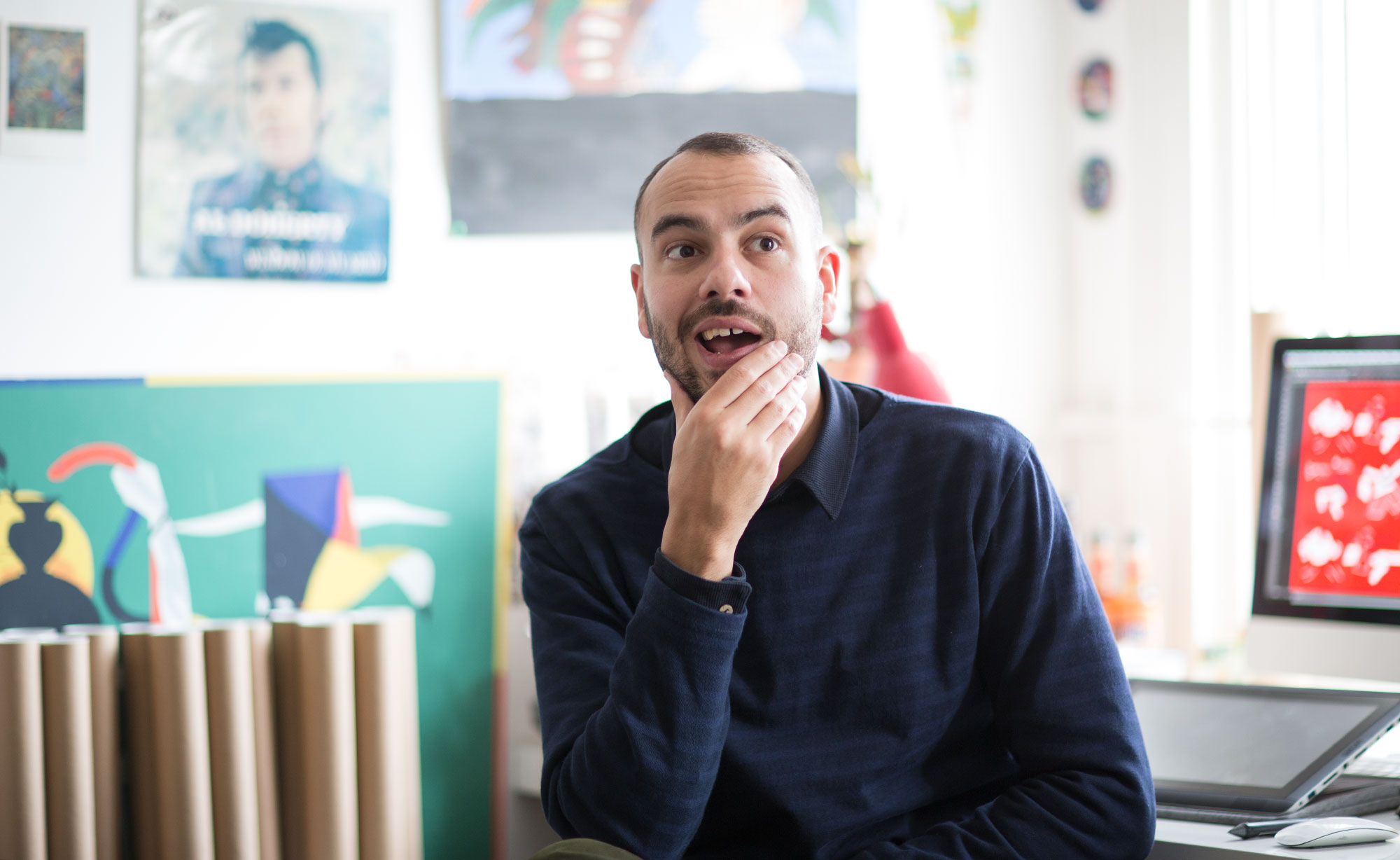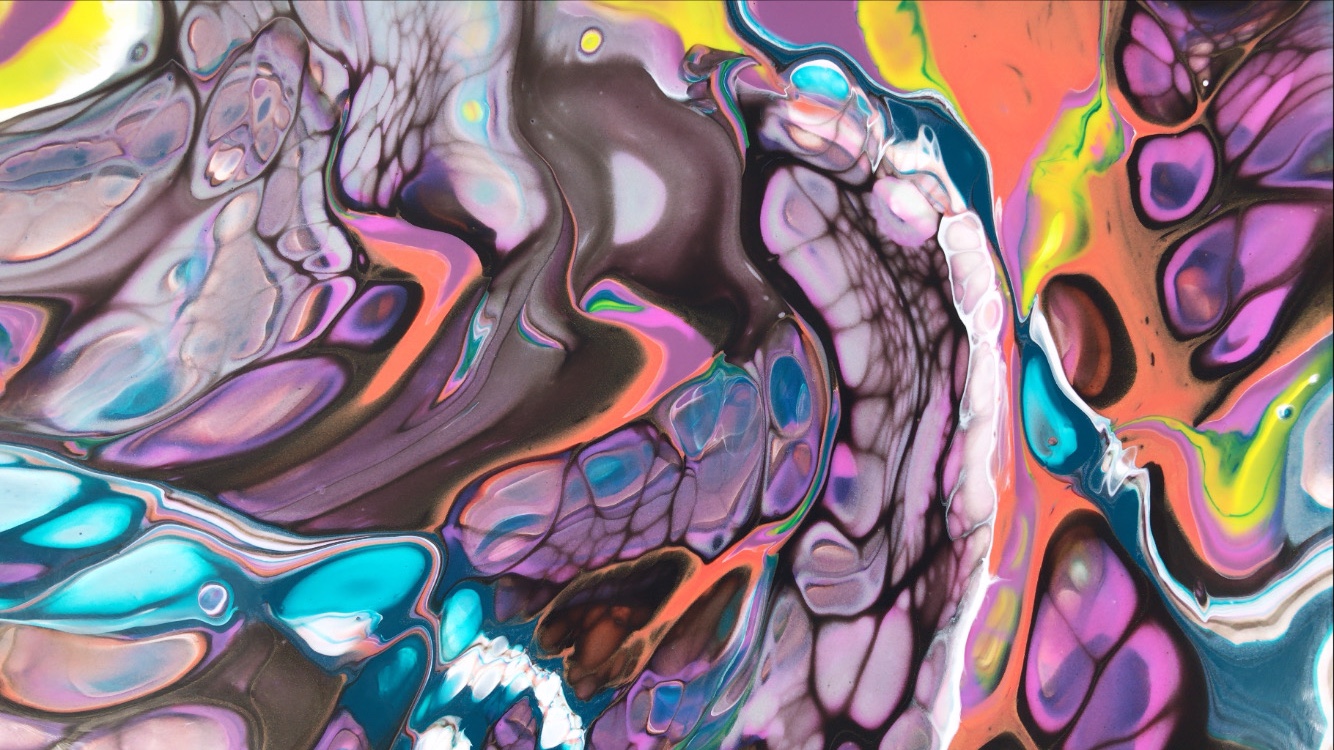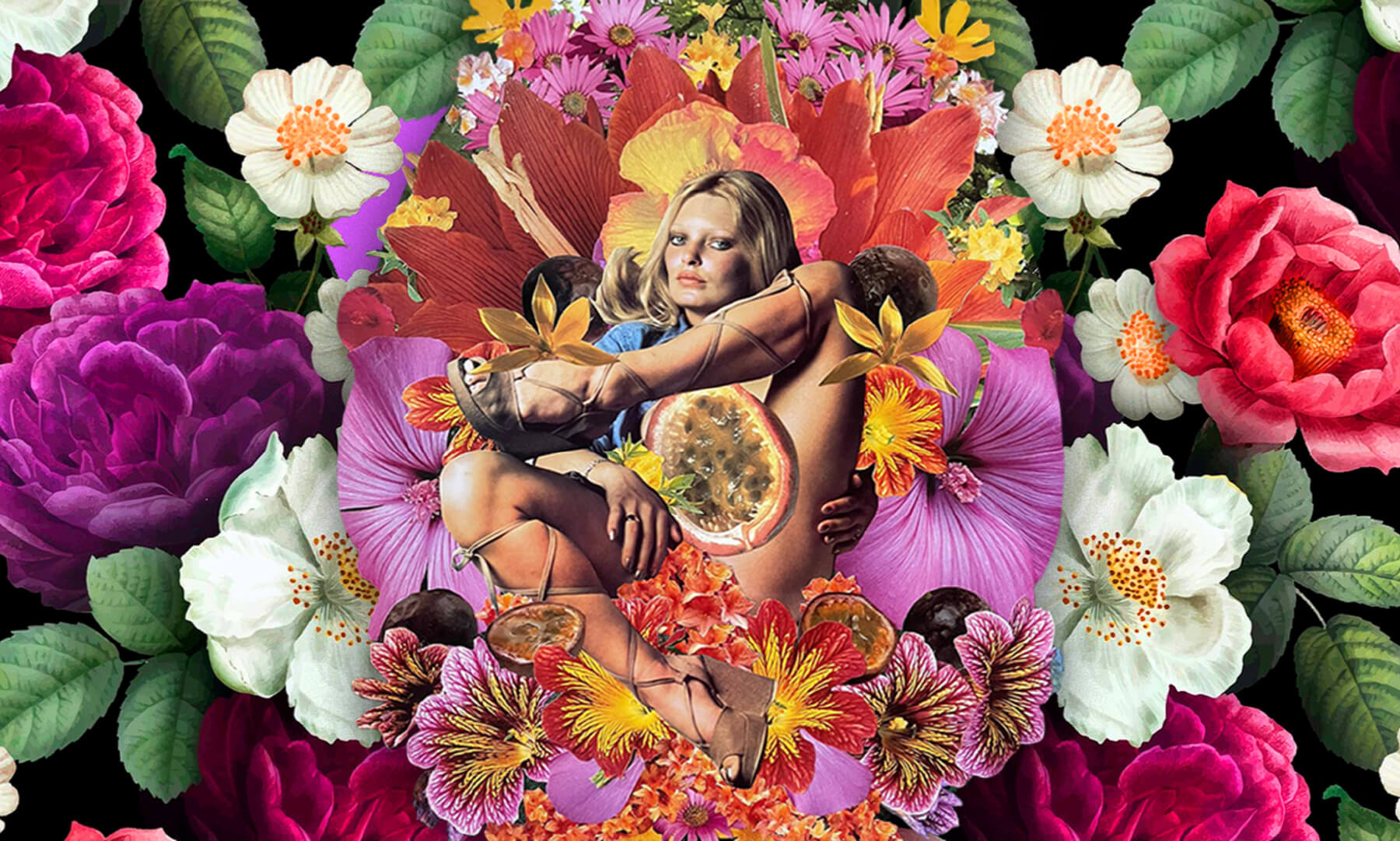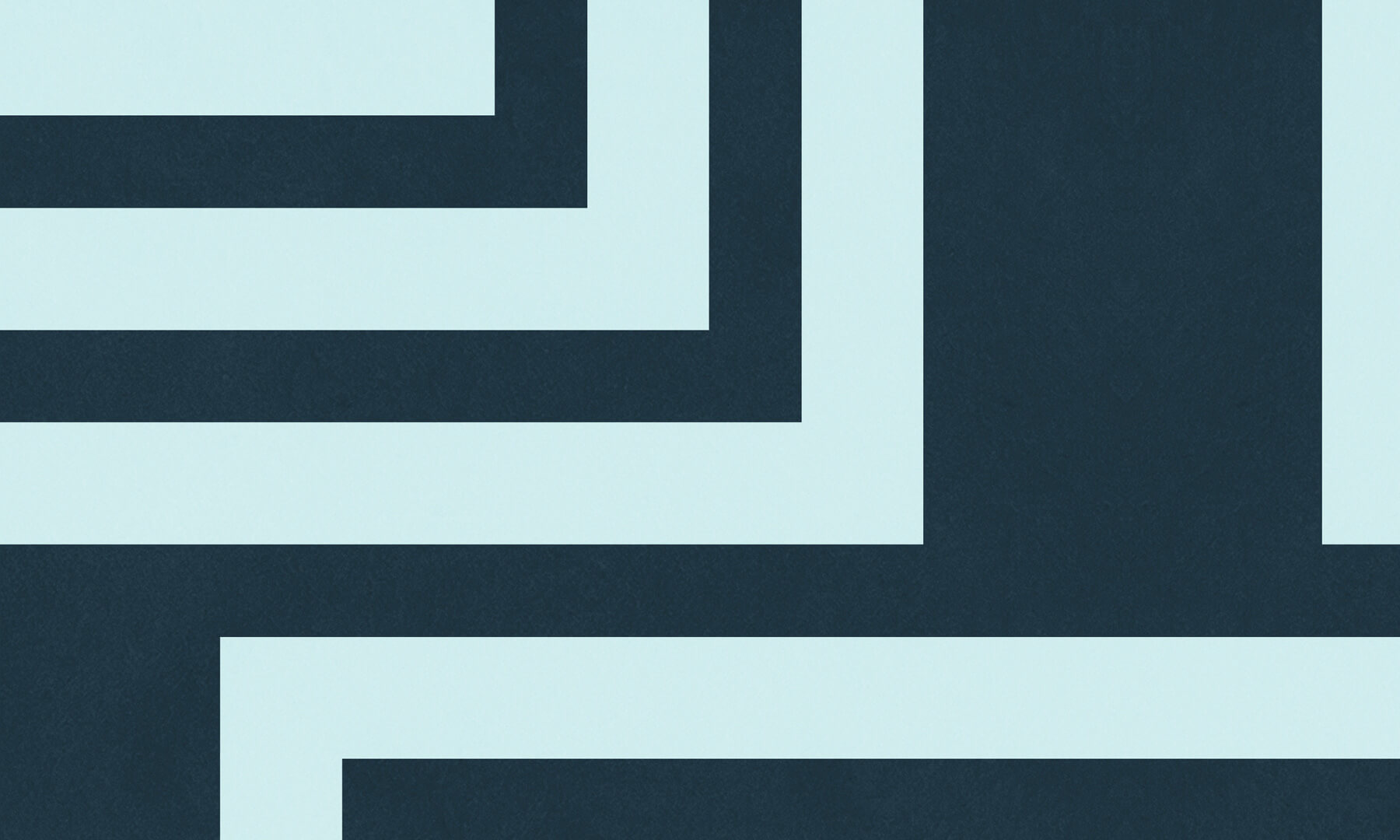How did you start?
I studied graphic arts at Leeds and then decided that I liked drawing pictures. I moved from Leeds to Liverpool, and was living there for a while. My sisters a graphic designer so I started working in that field to get some cash together and when I moved down to London and carried on working in design. I actually wanted to study in London originally but at eighteen I was a bit too scared being in London because I’m from a tiny little village so I was a little bit scared of it really.
How has your style progressed?
It has changed a lot, the intrinsic things are still the same, so things I like and the things I find visually attracted, but I use different materials and my skills improve. And despite being a slower learner my abilities have developed and I think my style moves in flux with that. Actually a lot of people say my style varies a great deal, particularly my agent. But I struggle with a style because I do things that I feel in that moment. Like when you listen to a record and your like this record’s wicked, but then next week you’re like I’m not really feeling this now and you change it. I’m also trying to do more free hand work that’s simple in its foundation, making it a lot more simple and free from restraint. I think I was seeking perception before and now I’m looking for the imperfections in stuff, which I think is quite beautiful. And you know the world that you live in really affects that so if you’re living in an environment where everything is perfect that mass manufacturing market, and the computers there all the time everything becomes very boring. So whilst this attitude of being free from a style or common aesthetic is not great for selling your work, it’s good for your soul.
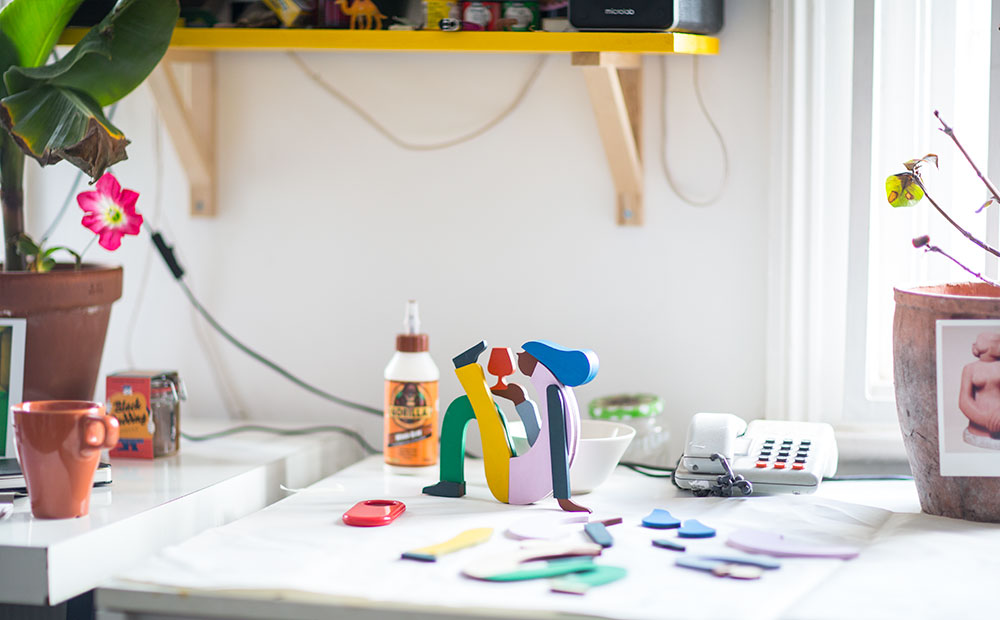
What’s your favourite subject matter?
People are definitely a big thing, if you look throughout history artists have focused on people. I think the attraction is that there is so much expression in a human face and it’s interesting to try and pick out all the nuances. I really admire people who express a lot with just objects but i always end up just drawing people so I guess that’s the continual narrative in the work.
Can you tell us a bit about your use of colour?
I think originally colours were a way of disguising the fact that i didn’t have a very formed style, but I’m still learning and using colours to be expressive as well. Being minimal is quite difficult because if you strip your style away and you’re not doing something that is very illustrative it can be quite hard to express something. So colours are a really good way to put that in there. It’s also hard to make a composition look really good in black and white so I guess colour was something that was practical form the very beginning, but is now integral to what I do. When i was in university i spent most of my time screen printing because i really loved it and loved the process. But you can’t afford to have loads of colours so I’d actually strip stuff back and only have minimal colours. Now I’ll use lots of different colours and have started putting grey in the work which is kind of nice because I’ve never really used that before. I’ll also find my palettes in different places. When I’m walking down the street I might find something and take a picture of it or see someone else’s work and try and take inspiration from it.
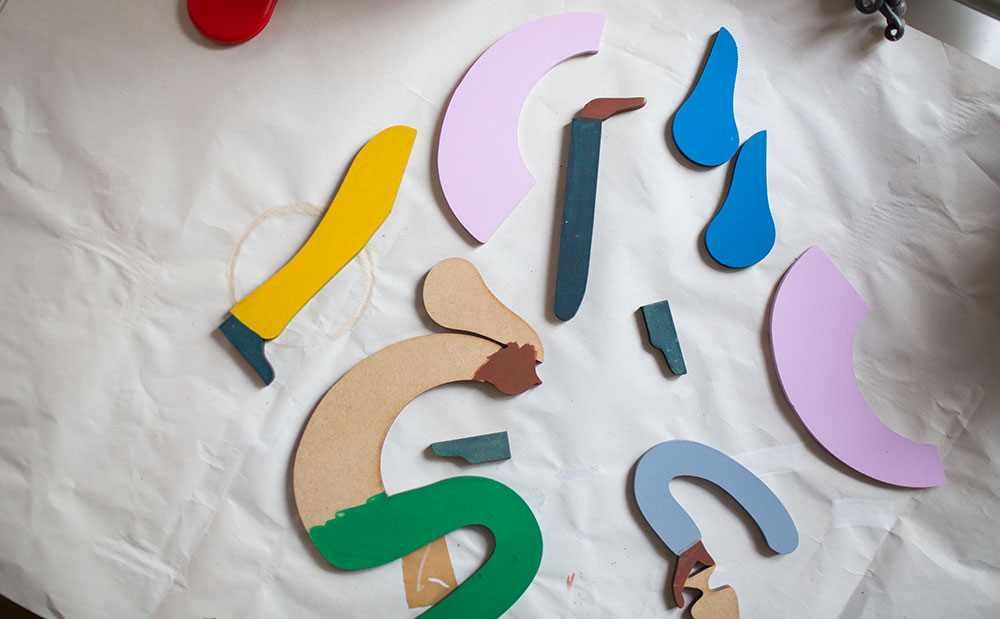
What’s your favourite piece of work?
Partizan is my favourite bit of work. I like it because it’s very free. When I started out iI wanted to design record sleeves, I think we all did, it’s one of those things you want to do because that square format make it’s tangible and as music it’s very cool. But sadly the record industry started to dip when I left university and as I entered the industry there was no money in making it. Not to say that’s what drives me, but when it’s your profession it’s of course part of it. Beer bottle labels are kind of a similar to record labels in that it’s a really simple format. The fact that it’s an indie brewery and run by mates also means I basically get to do whatever I want; sometimes for the worse and sometimes for the better. I’ve now being working with them for a while and amassed a big body of work. From the start you kind of see the naive nature of my work and then as they have progressed my work and I have progressed. Its also very time relevant work so when Rik Mayall died for example we did a homage to him.
Sounds like you’re heavily influenced by music?
Yes definitely, it’s a cliche thing to say but yeah everybody is really influenced by music. My brother runs a record label and always grown up around it. If I’m honest I’d really love to be a musician but I’m just not very good at it. Music’s like the thing isn’t it, it sorts you out when you’re a bit blue and it can really help you when you’re making a piece of work, sometimes it can lead you from one direction to another.
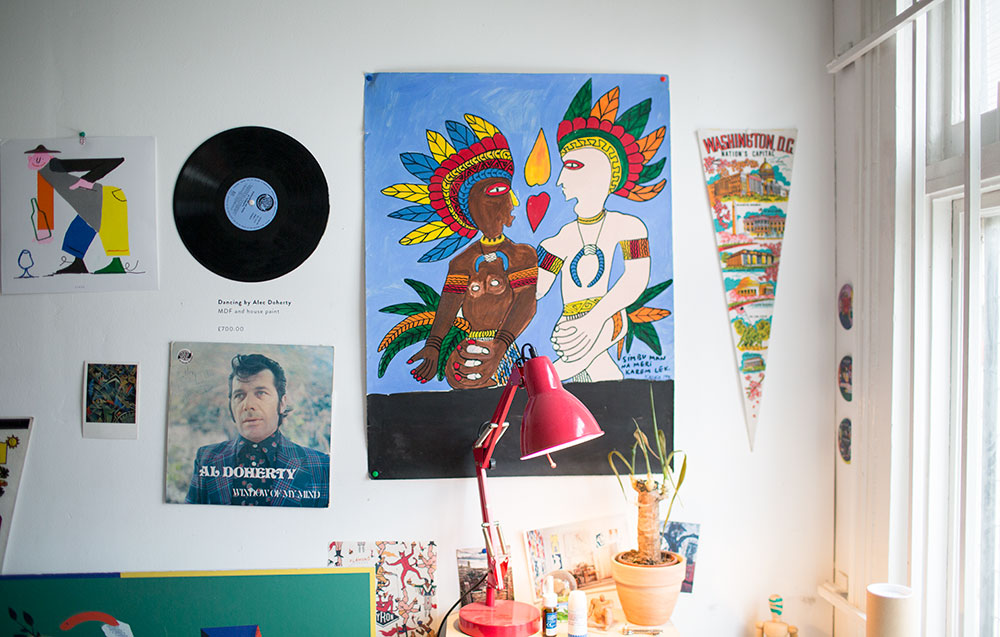
What’s your process?
My first thoughts are usually a colour palette or a simple idea. But I always try and start in a sketchbook and then from there it could go anywhere. Quite often I will move onto a the computer because unfortunately I don’t have the time to colour everything by hand. We spend so much time on the computer now, it’s such a great tool but it wrenches at your soul sometimes. I do a day a week at the camberwell college of art as a technician, mostly workshops teaching people how to use computers. Working with illustrators, It’s amazing how many of them don’t know how to use computers because the reality is that when you go out into the big bad world of work you really need to learn how to use it.
What other illustrators/artist are you inspired by?
I’m inspired by loads of people. London has such a massive contingent of illustrators and it’s great to be part of that community. People at the minute who i really like include Keith Shore form Mikkeller. We actually did a collaboration together and he’s a bit of a dude. Matthew the horse, my mate Jay and Nick over at Nous Vows. I love their stuff. Tom Slater, Rob Flowers, Rob Lowe. But beyond people within the industry I get inspiration from walking around and seeing sign painters, live music and even chefs. People doing interesting stuff basically.
